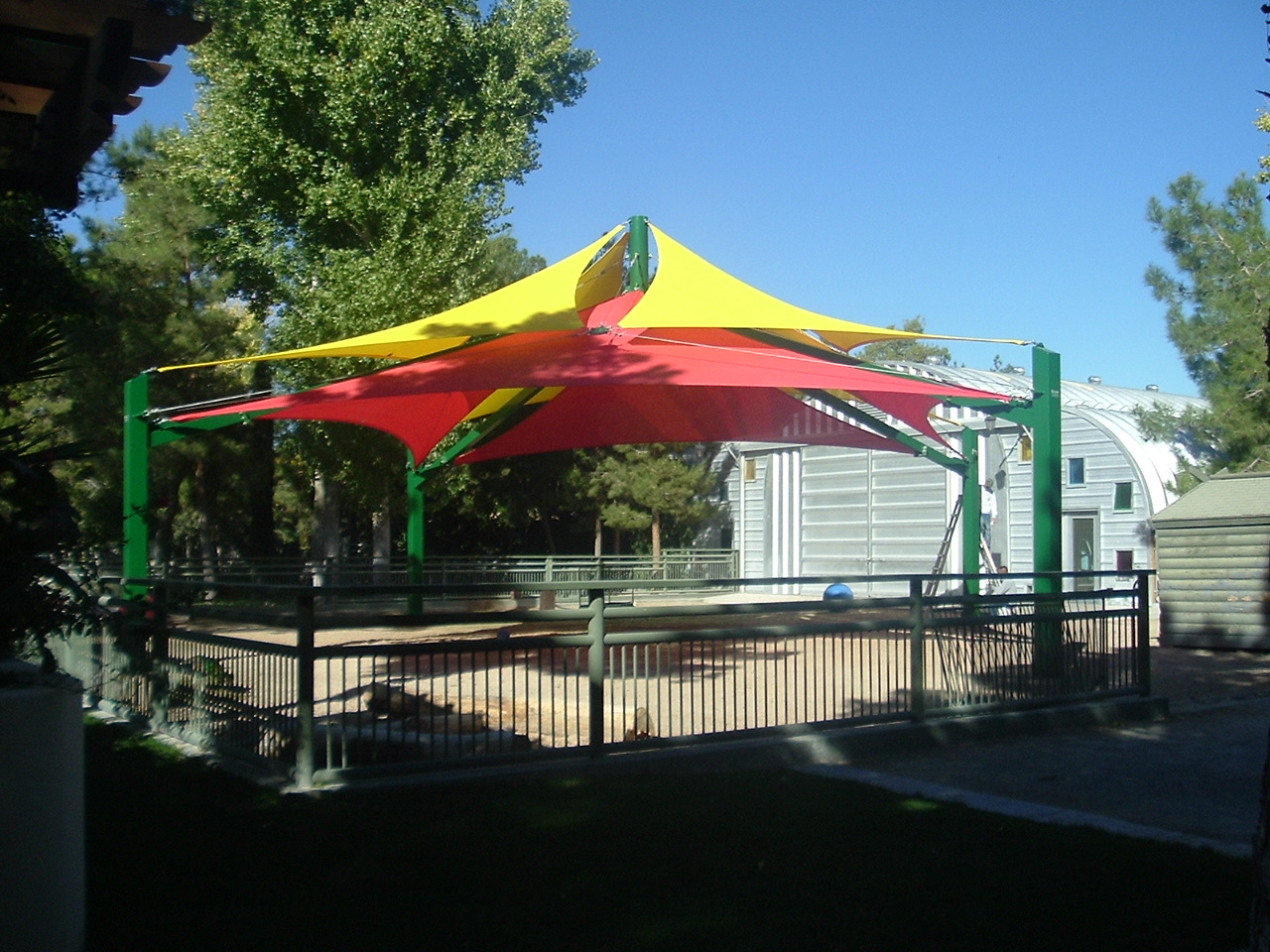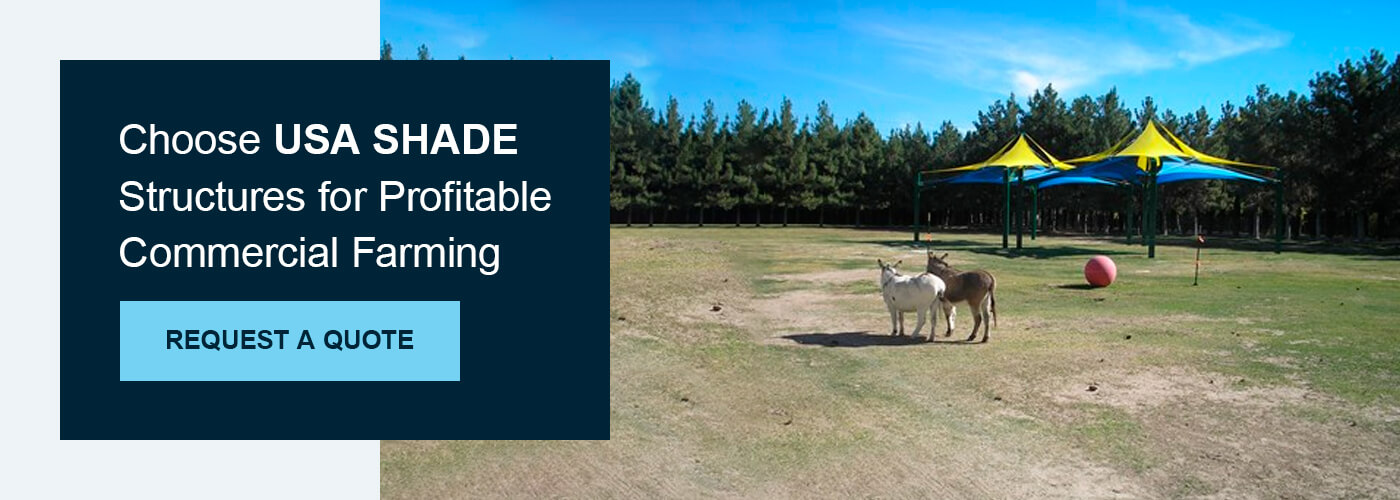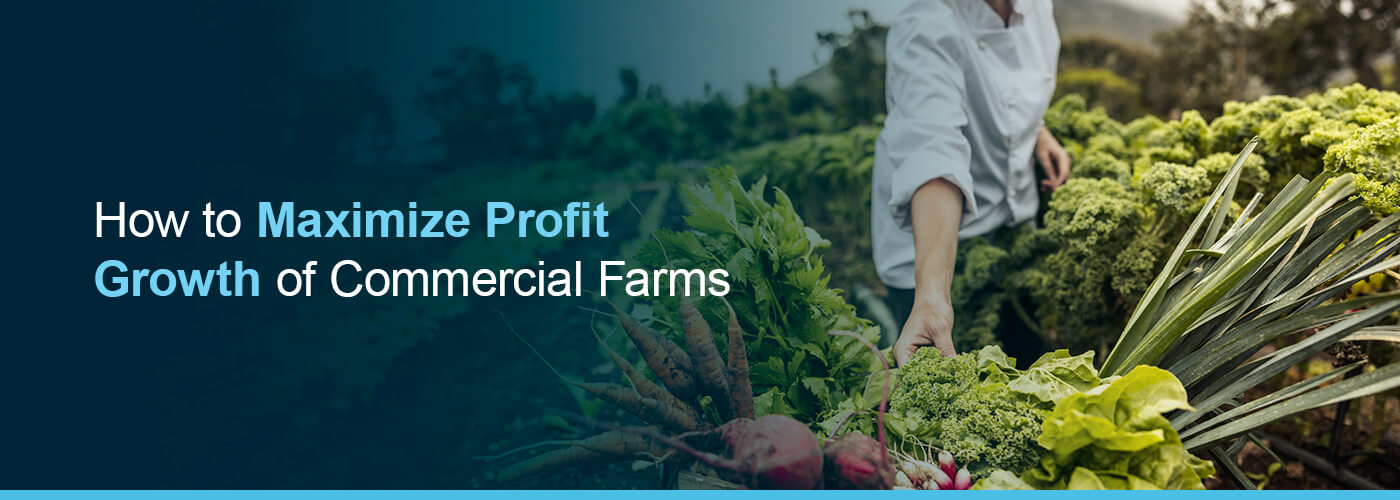
While farming is an ancient practice, there are modern challenges that commercial farms face when trying to remain profitable. From inflation and supply chain issues to climate change and the COVID-19 pandemic, farmers are facing plenty of obstacles that require creative ways to increase their profit margins.
As an industry-leading provider of shade structures, USA SHADE has worked with agricultural and farming businesses for almost three decades. We’re committed to helping our commercial farming customers maximize profit by protecting livestock and keeping workers cool. If you’re wondering how to increase your farm’s profit, use our guide for top tips on attracting more customers, reducing operating costs and boosting productivity to improve your bottom line.




HOW TO BUILD AWARENESS OF YOUR FARM
Marketing is essential to all businesses, including farms. The ability to build public awareness of your farm directly impacts your revenue. Despite the critical nature of business marketing, many commercial farm owners do not have a strong sales and marketing plan. According to one commodity broker experienced in advising farm owners, roughly 30% of commercial farms struggle to remain profitable, either because they carry too much debt or they don’t have a strong marketing plan. A lack of business skills can undo or diminish the hard work farmers put into their operations.
To be successful at attracting customers and positioning your farm as a first-choice business, you must develop a unique selling proposition (USP). A USP is a clear and succinct statement about what sets your farm apart from the competition. It’s the one thing your farm does better or distinct from what others do.
For a commercial farm, a USP might position the business based on factors like:
- Family or farm history
- Business values and mission
- Unique farming practices
- Supply chain ethics
- Customer service approach
A USP attracts the right customers and describes the ideal types of suppliers, employees and other stakeholders that would align with the farm’s purpose.
Here are three marketing approaches to help with maximizing profit growth of commercial farms.


Attend Farm-Related Events
To build awareness of your farm, it’s important to have a presence at local or regional farm-related events. Attending events in person allows you to interact directly with the community, including potential customers. This type of in-person networking lets you greet people and interact with them in a friendly way that leaves a good impression. Since you never know who will need your products one day, it can pay off to attend events and meet as many people as possible.
Having a presence at farm-related events also provides an opportunity to familiarize yourself with what other farms offer, so you can better understand your farm’s strengths and advantages in the marketplace.
Some of the top types of farm-related events to attend are:
- Festivals and fairs
- Farmers’ markets
- Farm open houses and expositions
- Industry trade shows
- Industry seminars and conferences
When you arrive at an event, be prepared with the gear and supplies you’ll need to best represent your farm. Some of the top items to bring to a farm event include:
- Product samples
- Branded merchandise
- Brochures with information about products, pricing or processes
- Business cards
- Printed testimonials
Many customers feel more comfortable buying from a business once they’ve had a chance to interact with the staff or owner one-on-one. Arriving prepared to discuss your products and having answers readily available can leave customers feeling confident in your business. Additionally, word-of-mouth travels fast, so when customers feel that they had a great experience with your farm, they’ll be more likely to pass on a good review or referral to others.


Create a Website
Relying on in-person events alone will limit your farm’s ability to maximize profit. Marketing plans need to have a well-rounded mix of strategies, including physical and digital marketing. Digital marketing is essential in modern business practices. Since the global pandemic has limited many in-person events, having a digital presence is a good way to compensate for any potential loss.
Having a business website is now vital to a thriving commercial farm. Today, customers of all types almost always begin their purchasing journey online, using the internet as a research tool to help them compare farms and their products, processes and practices. To capture this online audience, a farm needs a website that customers can visit to get all the information they need to help make their decision.
There are a few crucial elements to include for a website to be as functional and user-friendly as possible, including:
- Contact information: List your farm’s physical address, as well as a phone number and email address. If you prefer to filter through different types of inquiries, list different email addresses or phone numbers for each category of concern and include the names of the people acting as the point of contact. You can also create a contact form to make it easier for web visitors to send a quick message.
- Products and services pages: Create a page on the website that details the types of products and services your farm offers. Some relevant information to include on this page could be product or service pricing, types of customers your farm works with and the regions you serve.
- About page: Since many people choose to work with businesses because of their story, mission and values, it’s important to have a page that describes what your business is about. An about page is where you can tell your story and paint a picture of what makes your commercial farm unique.
To get started creating a website, you’ll need help from the following types of services:
- Professional logo design
- Web design and development
- Domain name purchasing
- Web hosting service
For creative inspiration, browse some existing commercial farm websites, like Shamrock Farms in Phoenix, AZ, 44 Farms in Cameron, TX or the Green Door Gourmet in Nashville, TN.
Get Involved on Social Media
In addition to having a website, there are other ways to reach people digitally. Social media is a user-friendly way to connect with potential customers, build a following and amplify awareness about your farm. It’s also a cost-effective way to advertise and reach a target audience.
Here are some tips on how to use social media to promote your commercial farm:
- Use imagery that shows off your farm, equipment, products and staff
- Write compelling, humorous or informative captions that encourage engagement
- Discuss your farming practices and processes and why they’re important to your business
- Invite users to share, follow, like and comment
- Update followers on upcoming events, open houses or the availability of new merchandise
- Advertise promotions, specials or the launch of new products
Try to make your social media posts as consistent as possible in tone and style to help build a brand that followers come to know.
The top social media platforms for commercial farms include:
- YouTube
Because it can be time-consuming to manage multiple social media accounts, start out with one main platform and then add others once you’ve developed a system that works for your business.
Ways to Reduce Costs of Farming
Bringing in more sales through better marketing is not the only way to increase your farm’s profit. Reducing overhead costs also helps your bottom line by allowing your farm to keep more of its revenue. However, you don’t need to sacrifice the quality of your farm’s products or the integrity of its practices to keep costs low. You can find creative ways to reduce costs by examining different areas of your business operations and noticing where you may be overspending or spending on unnecessary costs.
Below are some ways to increase profit for your commercial farm by reducing operating costs.


Selling to Local Businesses
Keeping your sales reach localized can help lower operating costs, particularly those related to transportation. Transporting products outside of the local area requires a significant investment in time and operating expenses, including:
- Truck and trailer leasing
- Fuel, maintenance and repair costs
- Vehicle insurance, depreciation and wear-and-tear
- Payroll costs for long-haul truck drivers
- Logistics services and coordination of distribution points
Depending on the types of products your farm creates, you may need to invest in cold freight and storage to distribute outside of the local region. Climate-controlled environments are extremely expensive to operate, and cutting back on these costs by providing goods to local businesses can help maximize your farm’s profits.
Today, many people purchase from local businesses as a matter of personal preference. According to one 2021 survey, 70% of Americans prefer buying from small businesses. Tapping into the market segment of local shoppers can help open up an entirely new opportunity for revenue.
Selling directly to local grocery stores and community markets can be a great way to cut back on the costs of long-distance transportation. Many grocery stores also advertise to their customers that they provide local products. In this way, grocery stores can act as a strategic partner in helping your farm increase awareness locally.

Investing in Alternative Energy
Farms are in a unique position to adopt alternative forms of energy because of the amount of land available and often the type of climate required for certain types of farming. Some examples of alternative energy for commercial farms include:
- Solar energy: Solar energy is becoming easier to switch to thanks to advancements in technology that have made it more affordable to adopt. Installing photovoltaic panels on your barn’s roof or on your land can help reduce energy costs and eventually earn free power.
- Wind energy: Wind turbines generate energy from wind and are an excellent source of alternative energy for farmers located throughout the nation’s wind belt. Today, you can have independent wind turbines or grid-connected ones depending on your local permissions.
- Geothermal energy: The Earth’s core provides a natural source of heat that can be converted into energy for farming practices. Geothermal energy can help heat greenhouses and power aquaponics systems.
Before investing in any form of alternative energy, it’s important to calculate the return on investment and the payoff period. Alternative energy is costly to install initially, and the payback period may be several years before you can break even on the investment and start to reduce your energy costs. However, thanks to many government credits and incentives, it’s becoming more cost-effective to install alternative energy sources.
Another option is to lease your farmland to energy companies that install and operate the energy infrastructure on your land. This can help generate an additional monthly or annual income for farmers.
Implement Crop Rotation Strategies
For crop producers, rotating crops can lead to reduced farming costs and higher seasonal yields. Crop rotation is an ancient practice that farmers have used for thousands of years. Rather than growing the same crop on the same area of the land season after season, farmers instead switch the types of crops they grow. This leads to an improved nutrient and organic matter composition of the soil.
Growing the same crops repeatedly limits the variation in organic matter and nutrients available in the soil. Rotating crops promotes the growth and availability of a variety of nutrients and organic matter and improves soil structure by reducing erosion. It also reduces the number of pests and the amount of harmful bacteria that live in the soil.
Not rotating crops leads to an increased reliance on fertilizer to enrich the soil with depleted nutrients, such as nitrogen. It may also reduce the need for integrated pest management (IPM) systems, pesticides and herbicides.
Crop rotation can occur in a few ways depending on the climate and the soil’s current composition. It can mean switching between crops that have offset growing seasons. Alternatively, crop rotation can mean having certain seasons where the land remains fallow. The USDA provides some examples of crop rotation sequences, including:
- Broccoli, winter wheat, then sweet corn rotation
- Wheat, fallow, alfalfa, then potato rotation
- Grass seed, small grain rotation
Rotating between food, fiber and animal feed crops is a popular way to maximize the profit growth of a commercial farm because it reduces costs and expands a farm’s customer base.
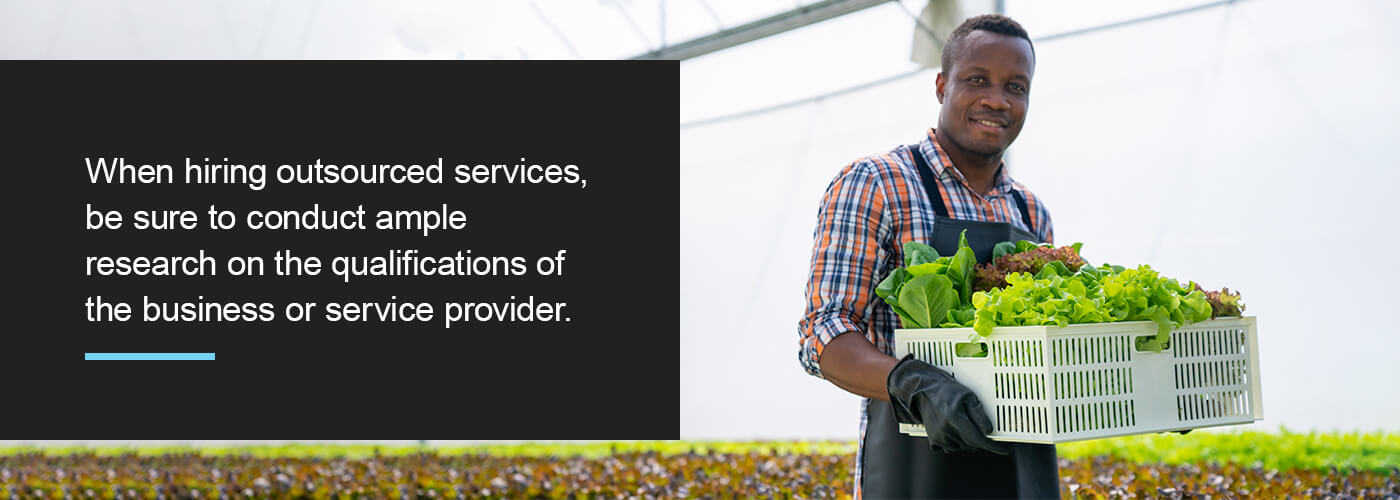

Outsourcing Services
Small business owners and independent operations tend to try to handle every business aspect themselves. Rather than taking on the responsibility yourself or hiring full-time employees, commercial farms can instead outsource certain business operations to third-party experts. This can lower the time required to manage these daily business needs as well as cut costs by hiring services on an as-needed basis.
Types of services you can hire as a farm owner include:
- Delivery services
- Sales and marketing professionals
- Financial planning and analysis
- Bookkeeping and accounting, including tax preparation
- Human resources professionals or recruiters
- Specialized experts like agronomy scientists
When hiring outsourced services, be sure to conduct ample research on the qualifications of the business or service provider. Part of reducing costs means ensuring that things are done correctly rather than making costly mistakes. Search for reviews and ask the service provider for testimonials. Be sure that they have experience working with other commercial farms or agriculture businesses or are highly experienced in a range of industries.
Invest in Hail and Shade Protection Structures
Reducing operating costs to increase profitability means looking for creative solutions. Crop and livestock loss is a major source of profit loss in farming, so finding innovative ways to protect your income source is essential.
One of the common sources of crop loss is weather-related events, particularly drought, flooding and hail. Having tried and tested solutions to protect crop loss during extreme weather can help maximize a commercial farm’s profit. When it comes to livestock farms, it’s critical to keep animals protected from the weather, including heat and hail.
In some parts of the country, hail can range from the size of a pea to the size of a golf ball, potentially causing severe damage and injury. To prevent destruction, farmers erect hail structures, which are permanent installations that provide cover from hail. Livestock stay out of the way of dangerous hail storms, keeping animals protected during these bouts of extreme weather.
In addition, farmers can install shade structures to protect livestock from heat stroke. Animals naturally seek shade in hot weather, so having a shade structure for livestock allows animals to gather under the structure and keep cool.
Tips for Increasing Farm Productivity
In addition to driving more sales and reducing costs, farms can maximize profit by increasing productivity. Increasing profit for commercial farms through better productivity involves optimizing farming processes to produce greater yields using the same amount of resources. Productivity is the measure of how efficiently a business uses its resources, especially labor. Getting more done with less is how farms can adapt to economic changes, including shifts in consumer demand or increases in fixed operating costs.
Farms that can produce more crops can maximize their profits by generating greater output without needing to scale substantially. Making small improvements to farming practices can help boost productivity.
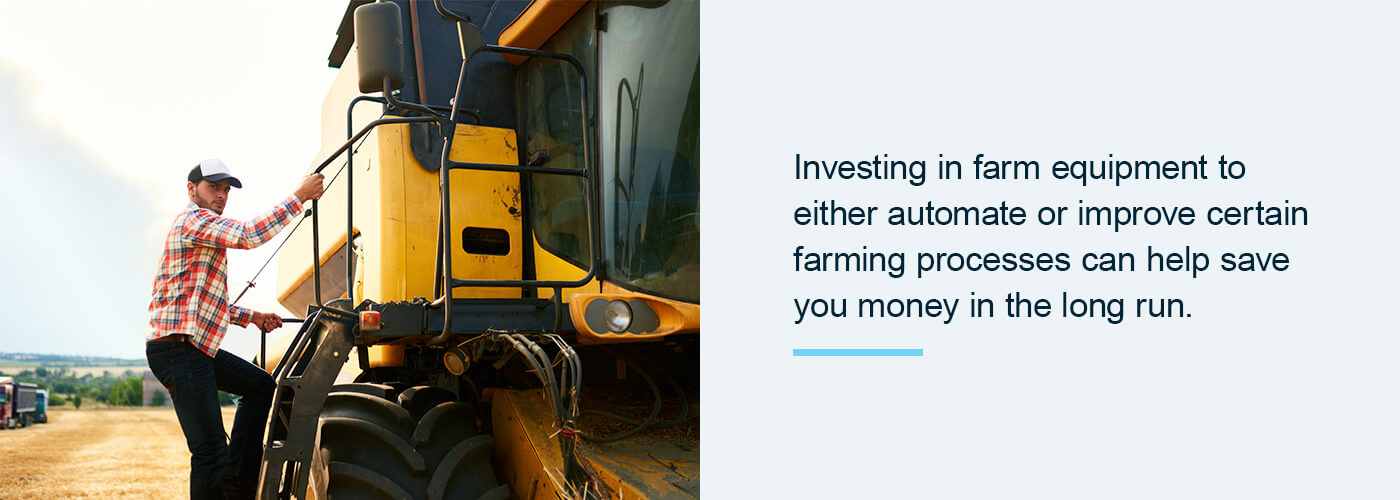

Improve Farm Equipment
Farm equipment is the workhorse of the farm, allowing farmers to make processes more efficient. Equipment reduces the amount of manual labor and time it takes to plant and harvest crops, meaning you earn higher yields with less input. Investing in farm equipment to either automate or improve certain farming processes can help save you money in the long run. Farming equipment can quickly pay for itself, generating a return on investment in the form of reduced labor costs and higher production.
Some of the types of farm equipment to invest in include:
- Tractors
- Mini excavators or backhoes
- Harvesters
- Attachments, such as tillers, seed sprayers and manure spreaders
- Utility trucks
- Water pumps
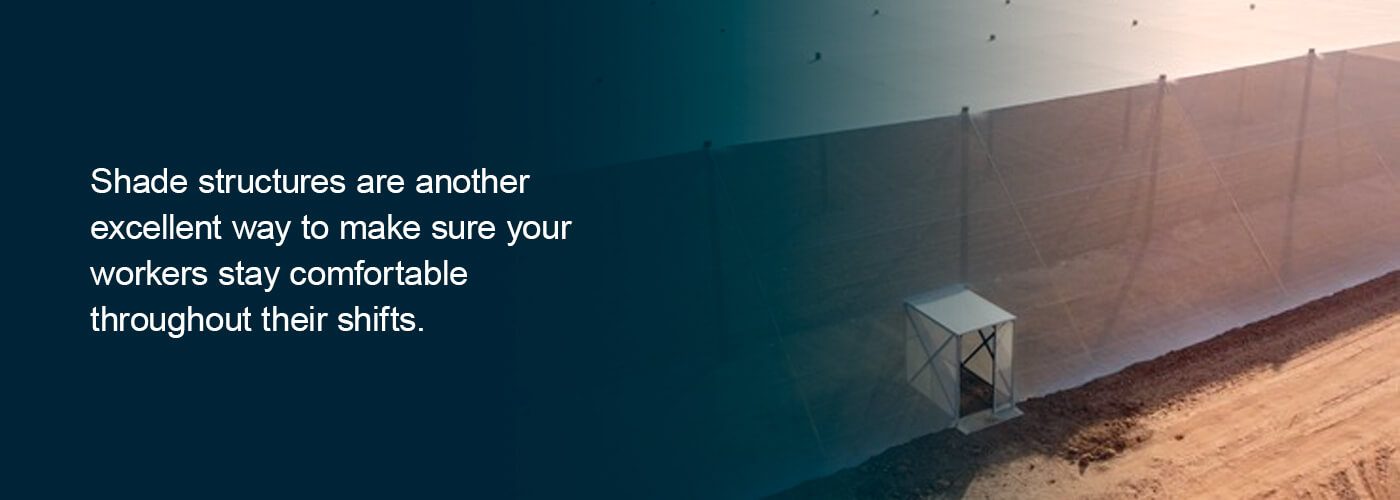

Make Working Conditions More Comfortable
Another way to increase farm productivity is to ensure that your employees are well taken care of so they can continue to perform at high efficiency. Working conditions on farms can be tough, with long hours and scorching heat making it difficult to maintain a high level of productivity consistently. Farm owners may want to make working conditions more comfortable by ensuring that laborers take sufficient breaks, drink plenty of water and wear the correct personal protective equipment.
Shade structures are another excellent way to make sure your workers stay comfortable throughout their shifts. Employees and livestock alike can use shade structures to stay out of the heat and cool off. Shade structures for agriculture and farming shield workers from harsh conditions, ensuring that they have a spot to take a break so they can return to work more productively.
Choose USA SHADE Structures for Profitable Commercial Farming
Turn farming into a highly profitable venture by finding new ways to bring in revenue, reduce costs and increase productivity. With the right business practices, including creating a marketing plan, leveraging the local market and investing in the right farm equipment, commercial farms can become profitable long-term.
USA SHADE offers shade structures for agriculture and farming. Our shade structures provide a way for livestock and ranch workers to keep cool. They also help shield your equipment, products and other areas of the farm from the heat, providing protection against sun damage.
View our range of shade products, including our cantilever and wrap-around designs, and request a quote today.


